SlingFin Portal Tent Review
The SlingFin Portal is a significant tent! At less than 3 pounds, it may be the lightest, 2-person, freestanding tent that can handle near-four-season conditions. As such, the SlingFin Portal adds a margin of safety and protection that most 3-season, double-walled backpacking tents like the Big Agnes Copper Spur can’t provide. Shop now.
The SlingFin Portal is an excellent choice for hikers who could be heading into stormy weather and high winds and can’t be sure of a protected campsite. It’s also ideal for hikers looking for a freestanding tent that can handle significant snow loading, without the weight of a dedicated four-season shelter. But the interior of the Portal is far from spartan. The SlingFin Portal has near vertical walls, generous headroom, two doors and vestibules, and tons of pockets that make it’s 28 ft2 of floor area seem much larger. In summary, the SlingFin Portal is an attractive combination of extreme weather resistance and low weight, while still delivering reasonable living space and creature comforts.
You make Adventure Alan & Co possible. When purchasing through links on our site, we may earn an affiliate commission at no additional cost to you. Here’s why you can trust us.
Compare the SlingFin Portal to more great options in our guide to the best backpacking tent and ultralight tent. Compare Portal 2 to its sibling, which you can read more about in our SlingFin 2Lite Review.
SlingFin Portal Key Specs
Design: 2 person | 3 to 4 Season | Double Walled, Freestanding tent
Features: Dual doors & vestibules, can use trekking poles for additional support, internal cross-bracing
Weight: 2.8 pounds | 45 ounces | 1.27 kg
Interior Space: 27.45 square feet
Vestibule Space: 16.8 ft2 (2x 8.4 ft2)
Peak Height: 44 inches
Area / Pound: 15.8 ft2/lb
MSRP: $560
Above, is the SlingFin Portal’s big brother: The engineering from the ultralight, super strong SlingFin WindSaber mountaineering tent, pictured above, has trickled down to the SlingFin Portal. (Southern Patagonia Ice Shelf – Cerro Torre in the background)
What is SlingFin?
SlingFin is a startup in Berkeley, CA that has been quietly building some of the lightest and most sophisticated, high-tech, mountaineering tents for use in the harshest places on the planet, like Everest. What’s cool is that SlingFin is an employee-owned, self-funded company — started by some heavyweights that have been working in the outdoor industry for decades.
We recently used their new ultralight, super strong SlingFin WindSaber Tent (which we would highly recommend!) on our trip to the Southern Patagonian Ice Shelf which routinely sees winds 60 to 100 mph. It’s a sub 5 lb, double-walled high mountain tent that can withstand extreme winds and huge snow-loads. As such, it can go up against the 10 lb big-dog mountaineering tents like the TNF Mountain 25. What makes SlingFin tents better is their innovative and highly engineered structures and rigorous sourcing of the strongest, and most moisture and UV resistant fabrics.
SlingFin’s TreeLine Series of Backpacking Tents
With tents like the Portal, SlingFin has incorporated what they’ve learned from their mountaineering technology into their exciting “TreeLine Series” of tents for backpackers. These tents are light enough for backpacking, but approaching the strength of mountaineering tents. An attractive options for backpackers that venture into wilder places. As such, they add a margin of safety that most 3-season backpacking tents can’t offer.
As SlinFin says of the Portal: ‘By incorporating several technologies from our Expedition Series tents, we were able to give the Portal a degree of stability and weather resistance previously reserved for dedicated “four-season”… tents.’
The SlingFin Portal Tent is great tent for almost all of the year. But it excels for shoulder season trips (late fall and early spring) where there is a significant chance of serious snowfall. Wile under 3 pounds, it can withstand more snow loading than any 3-season, double walled tent.
Overview of the SlingFin Portal Tent
The SlingFin Portal is a spacious, highly engineered, two-person tent packed with features and an innovative support structure that enables it to be used as a four-season shelter*. At 2 pounds, 13 ounces, the Portal is substantially lighter than all other four-season-appropriate freestanding tents on the market, giving it a remarkable strength-to-weight ratio. With a peak height of 44 inches, an interior space of 27.45 sq feet, and two side entrances, the Portal fits neatly in the middle of three-season, two-person-shelter space-to-weight ratios. That is, it weighs no more than most three-season tents but is substantially stronger and more storm worthy.
What makes the Portal stand out is its mountaineering-based, structural design that resists snow loading and high winds. This is done by using:
- trekking poles as two “outrigger” supports
- crossing internal guy lines at either end of the tent that can be anchored to matching tie-out on the fly/poles
- 10! external guyline points
- Oh, and SlingFin uses extremely light, strong, and durable fabrics (expensive, but worth it).
All of the above is optional and need not be done unless the conditions warrant. So, calm winds and no snow and you can skip deploying these options. But they are there if needed.
Diagram of structural truss created by internal and external guylines in the SingFin Portal Tent. Read more | Bombproofing Your Tent: Part 1-Windproofing – Wind and Wind Resistance.
* Four-season in its strength to handle high winds and snow loading. Only caveat is that is has a mesh inner-tent, so it is not as spindrift resistant as a solid-walled 4-season tent.
What’s Great about the SlingFin Portal Tent
Below we list the key features that make the SlingFin Portal Tent a standout.
Internal crossing guy lines at each end of the tent match up with external guylines attached to the fly and poles to make a huge increase in strength with essentially zero increase in weight. See How to strengthen your tent with internal guylines (video).
Four-Season Strength – Three-Season Weight
The SlingFin Portal Tent has stellar wind resistance, and the ability to stand up to snow loading. Depending on where you are in the country, winter comes early and stays late, and having a shelter that can handle everything the shoulder seasons have to offer is paramount to getting outside throughout the year. The wind resistance and stability of this shelter set it apart from other freestanding tents in the sub-three-pound weight category. The exterior guyline anchors, interior guylines, and trekking-pole outrigger attachment all contribute to provide an extremely stable pitch for the Portal without weight penalties. Yes, you’ll take some extra time getting everything set up, but in bad weather it’s well worth the effort to prevent potential tent collapse — something you never, ever want to experience.
Outrigger trekking pole deployed.
Snow Shedding & Ability to Handle Snow Loading
The steeply angled walls offer more than just shoulder room. They also also mean this shelter sheds snow effectively. In addition using your trekking poles on the tent’s outrigger attachments on the ends of the top crossbar makes huge increase both in the SlingFin Portal’s resistant to snow loading, but also stabilizes the tent in high winds.
An exceptionally wide spreader bar at the top of the SlingFin Portal makes its walls nearly vertical. When combined with a generous 44-inch peak height it greatly increases “livable volume” compared to tents with similar floor area.
Livable Space
The interior space of 28 square feet is on par for a double walled 3-season tent (the Big Agnes Copper Spur has 29 square feet) but the generous horizontal spreader bar allows for ample shoulder room, and the 44-inch peak height make its available volume much larger and more livable. As such, it is more than enough space for most hikers to sit up side by side without touching the side walls. We had enough space for two Therm-a-Rest NeoAir sleeping pads, and most of our gear inside the main tent body and didn’t feel cramped sitting upright and shifting around in the tent.
The SlingFin Portal has more pockets than we’ve ever seen in a tent. This makes a huge difference in livability. Almost everything you need is visible and instantly accessible.
Tons of Pockets
One thing that helps with the livability of the tent is all the mesh pockets. The SlingFin Portal has 7 pockets; two triangular ones at the end at the head, two small pockets for a headlamp or glasses or smaller items on the sides at the head, two high pockets on the ceiling, and one big one at the foot end. This alone significantly increases useable room in the tent. Honesty we’re not sure why the whole industry hasn’t figured this out.
Good Ventilation and Low Condensation
We experienced very little condensation in this tent, despite plummeting temperatures and precipitation for much of the testing period (thanks, shoulder season), and the sides of the shelter stayed dry. Contributing to this were SlingFin’s KickStand Vents. These are a more effective way to ventilate a shelter vs. the small peak vents prevalent on many tents. (More detail below). Finally, a double-walled tent with a mesh inner tent is always a solid first start to keep condensation down.
Line Adjusters
These might cause some initial confusion with users (how do you cram *this* piece into *that* piece? You don’t!) but the attachments with the drawcord create an easy-to-adjust, taught pitch we could achieve even with frozen fingers.
Features to Look For
Again, this tent is highly engineered, and might seem overly complicated at first. Bear with it… they’re all there for a reason, and it took us a few nights to understand everything this tent has to offer.
Wind Resistance and Stability: This is where the Portal really stands out. While this tent is not technically a winter camping piece of gear, it’s one of the only three-season tents on the market right now where you can confidently take it out in winter conditions. It is incredibly strong, but if you want to do the full setup with the guylines, be aware that it’s going to take a few extra minutes. Worth it if you know you’ll be in for some nasty weather overnight, but not necessarily something most hikers are going to want to take the time to do at camp each night.
Internal Guylines: An unusual feature, the pre-installed internal guylines “increase lateral stability” without a weight penalty. SlingFin has a tutorial for adding additional sets of internal guy lines here.
Pole Geometry: The SlingFin Portal’s crossed pole structure (no center hub) is stronger and more stable than two-hub designs like much heavier MSR Hubba Hubba (and the similar Nemo Dagger.) Tent pole hubs while convenient for assembly and high on user approval, put a lot of stress on poles where they enter the hub and therefore aren’t as strong as a hubless tents. With two hub design like MSR Hubba Hubba, the tent can warp/rotate into the wind presenting an ever greater area for wind loading, causing further deflection of the tent walls. Finally, SlingFin Portal uses DAC NFL Poles, which are the gold standard with the best strength-to-weight ratio on the market.
OutRigger Trekking Pole Attachment: In addition to the internal guylines, the outrigger poles add a huge amount of structural integrity and are what make the Portal into a four-season tent. As far as we know, SlingFin is the only company doing this. The velcro “outrigger” straps at the ends of the Portal’s spreader bar wrap around your trekking pole handles and reinforce the ceiling (and walls) and make this tent even more bomb-proof. Important when there is potential snow loading.
Premium Fabric$: The floor is a 20D polyether urethane (PE) membrane, as opposed to a polyester urethane (PU) laminate. PU can moisture longer, which can lead to mold and mildew. Tents with PU waterproofing can feel dry, but will still hold moisture and therefore be susceptible to mold. PE normally reduces tear strength, but SlingFin has found a strong PE fabric for the floor. Want to really nerd out? SlingFin does a deep dive into PE vs. PU here.
The Portal utilizes a highly UV-resistant fabric for the fly. Nylon 66 is more durable than standard nylon, with better tear strength and abrasion resistance than the materials used in most tents. This is one of the reasons this tent costs what it does. Two-sided silicone-treated fabric drastically increases the tear strength. Silicone doesn’t absorb water—each morning we just had to shake the fly out a few times and it was dry. The fly doesn’t absorb water which also means it won’t sag and stretch overnight. A tighter fly = less chance of a soggy tent = happier hikers.
KickStand Vents: This is a more effective way to ventilate a shelter vs. the small peak vents prevalent on many tents. Kickstands are small struts that prop open part of the rainfly vestibule doors to create a vent and allow air to circulate and reduce condensation. This creates a large vent with no mesh backing for increased air flow. With one on either side of the tent you get cross-tent airflow. In comparison, standard peak vents aren’t as effective as you’d expect them to be, and are often more cosmetic than effective. Their small area means that air gets choked down, and the mesh backing required in peak vents (necessary to keep bugs out) acts as an additional air block. Finally the peak vent has no cross ventilation option for airflow.
The Portal’s vents oriented away from the foot of the tent keep rain from blowing in. The kickstands do make doors a bit more difficult to use, but we feel the added ventilation is worth it.
Interior Pockets: More than enough interior pockets with smart placement make it easy to organize small gear items. This makes the tent more livable. Unpack your key items (flashlight, glasses, gloves, warm vest, phone, USB Battery) and put them in tent pockets, and then you won’t be endlessly rummaging about in the tent or your pack trying to find them. The pocket above your head is the perfect place for your phone and you can dangle your headset cord down to you ears.
Zipper garage with extra slider: The slider is often the first thing to fail in a tent. They are a huge pain to replace, and almost impossible to repair in the field.
Ripstop panels at apex of tent: The apex of the Portal is nearly flat, which gives more head space. However, parallel tops can be prone to dripping in super humid conditions. The ripstop panels keep condensation to falling into the tent. Flat roof, tons of room, and no drip problem.
Line Adjusters: the line adjusters on the SlingFin Portal are not commonly seen on tents. As such, there may be some initial confusion (how do you cram *this* piece into *that* piece? You don’t!). But the line adjusters create an easy-to-adjust, taught pitch we could achieve even with frozen fingers. And they are super reliable and less prone to slippage and failure than many other line adjusters.
Conclusion
The SlingFin Portal is a unique blend of strength, low weight and livability. So, at under 3 pounds the SlingFin Portal is an amazingly light one-tent-solution for 3+ to 4- season use. For much of the country it would work for all but the depths of winter. Having inherited many of the technical features of SlingFin’s mountaineering tents, it is exceptionally stable in high winds. As such, it’s a shoe-in for camping exposed above treeline when violent storms roll in. Finally, for a tent this light and strong it’s surprisingly livable. It provides quite good internal volume, nearly vertical walls, a high ceiling and a fair number of creature comforts like its 7 pockets.
Again, the SlingFin Portal adds a margin of safety, weather protection, and peace of mind that most (possibly all?) 3-season, free-standing, double-walled backpacking tents can’t provide.
However, keep in mind that while the Portal does a great job covering very broad range of conditions, it’s not specialized in any particular area. It’s not ultralight (but it’s light), and with a mesh inner tent it’s not technically a four-season tent (but it’s very close). The SlingFin Portal is priced similarly to other tents of comparable size. It’s the same weight as the Big Agnes Copper Spur HV UL 2, but the Portal is slightly heavier than UL models like the Big Agnes Tiger Wall UL2. And the SlingFin Portal takes a bit more effort to fully winterize as opposed to a true four-season tent like the MSR Access 2 or full-on mountaineering tent like TNF Mountain 25. However, these tents are heavier than SlingFin Portal and have drawbacks (steeply sloping walls on the MSR Access 2, and exceptionally high cost and weight for the TNF Mountain 25).
Finally depending on where you camp, the Portal’s 20D floor fabric may require some protection. To protect the floor of very light tent floors (less than 30D), we recommend putting a $9 Gossamer Gear Polycro Footprint or MLD UL FOOTPRINT under it.
Compared To
For tents in the same class checkout our Best Backpacking Tents & Ultralight Tents.
Detailed Technical Specifications
MSRP: $560
Trail Weight: 2lbs 13oz
Packaged Weight: 3lbs 4oz
Capacity: 2
Floor Area: 27.45 sq ft
Interior Height: 44″
Packed Size: 14″ x 5″
Floor Dimensions: 85″ x 51″ (head) x 42″ (foot)
Vestibule Area: 2 x 8.4 sq ft
Number of poles: 3
Number of doors: 2
Tent Body Fabric: 15D Nylon no-see-um mesh
Floor Fabric: 20D Nylon Ripstop PE 1800mm
Fly Fabric: 10D Nylon 66 Ripstop Sil/Sil
Poles: 2 DAC Featherlite NFL 8.7mm, 1 NFL 9.3mm

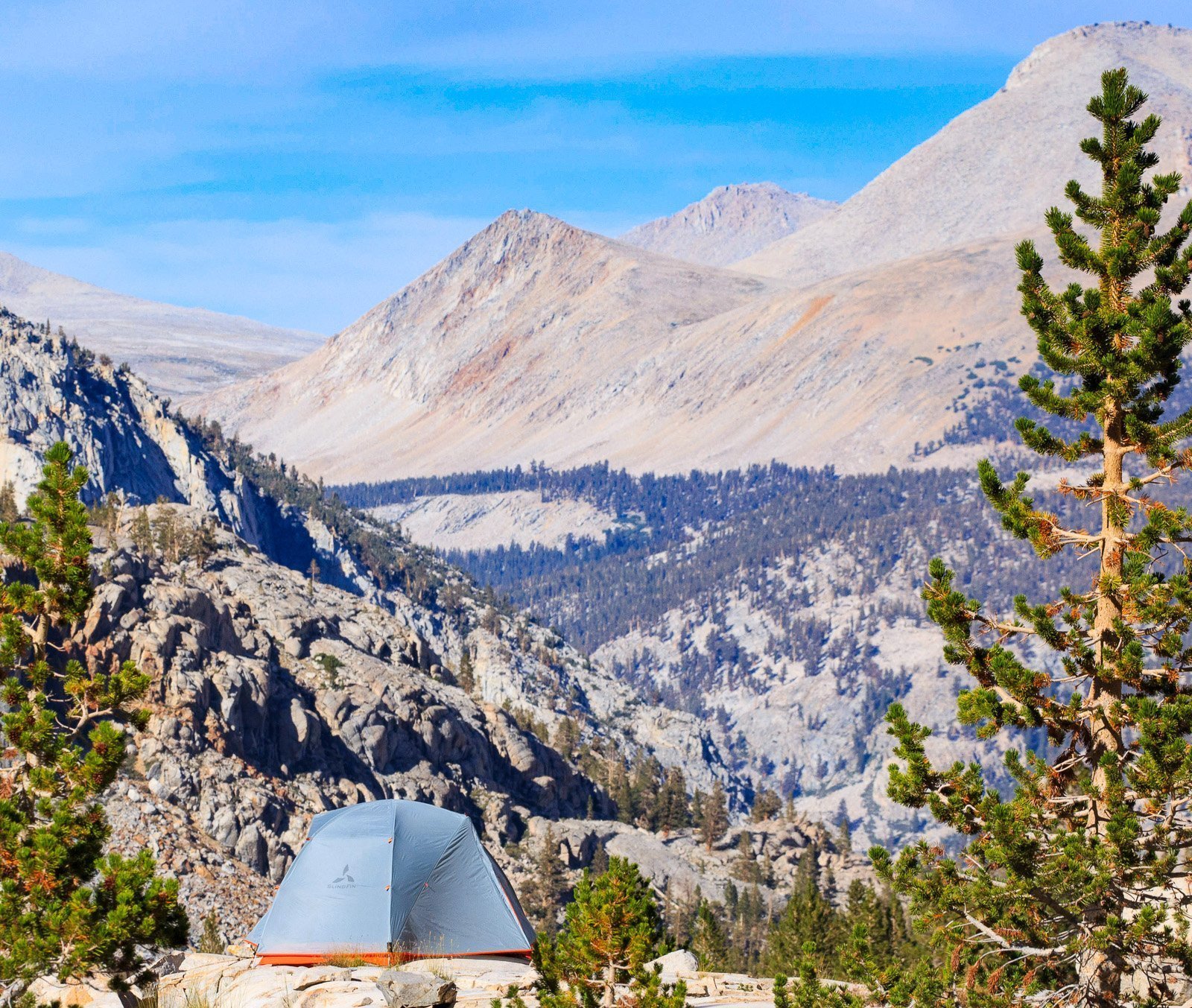
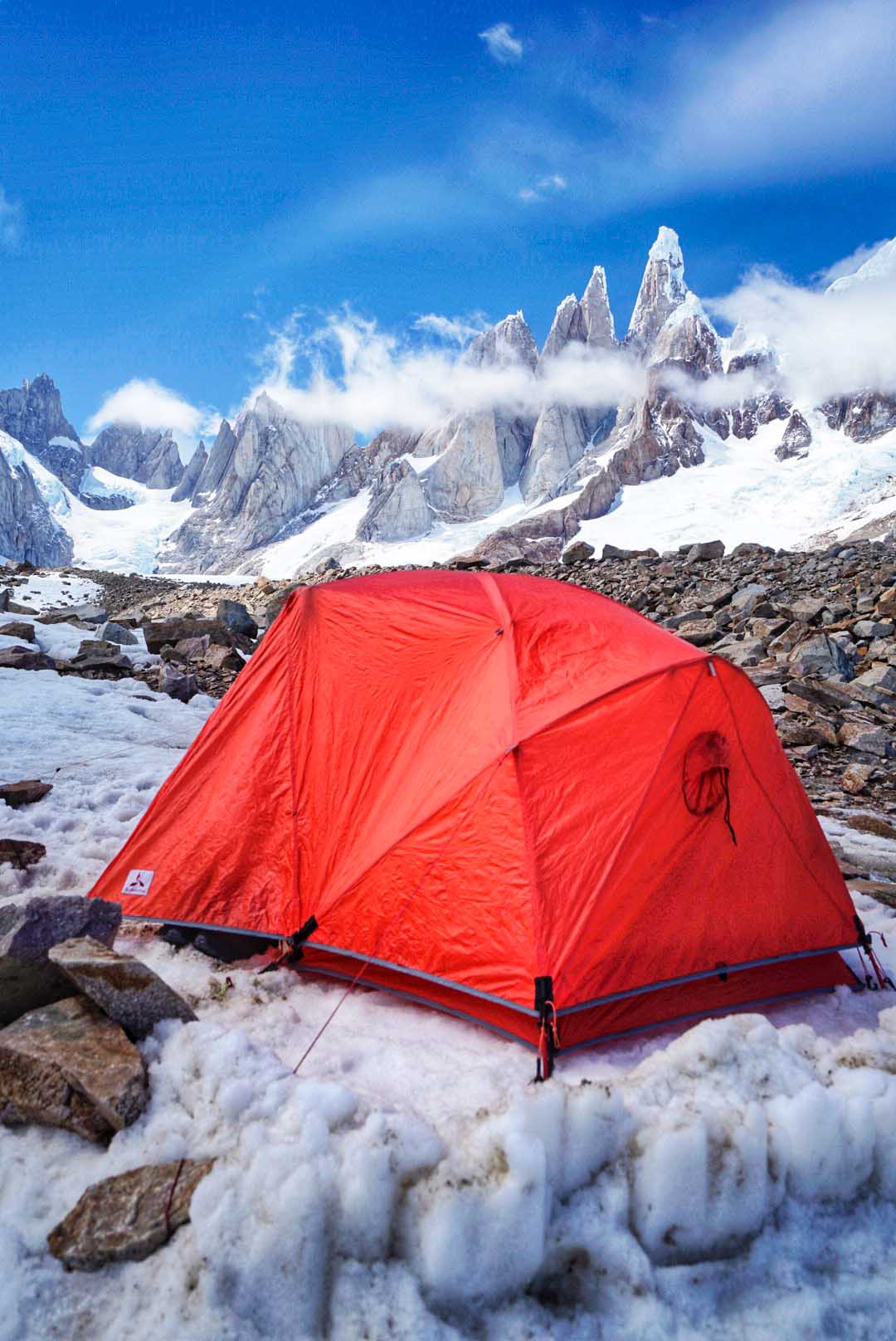
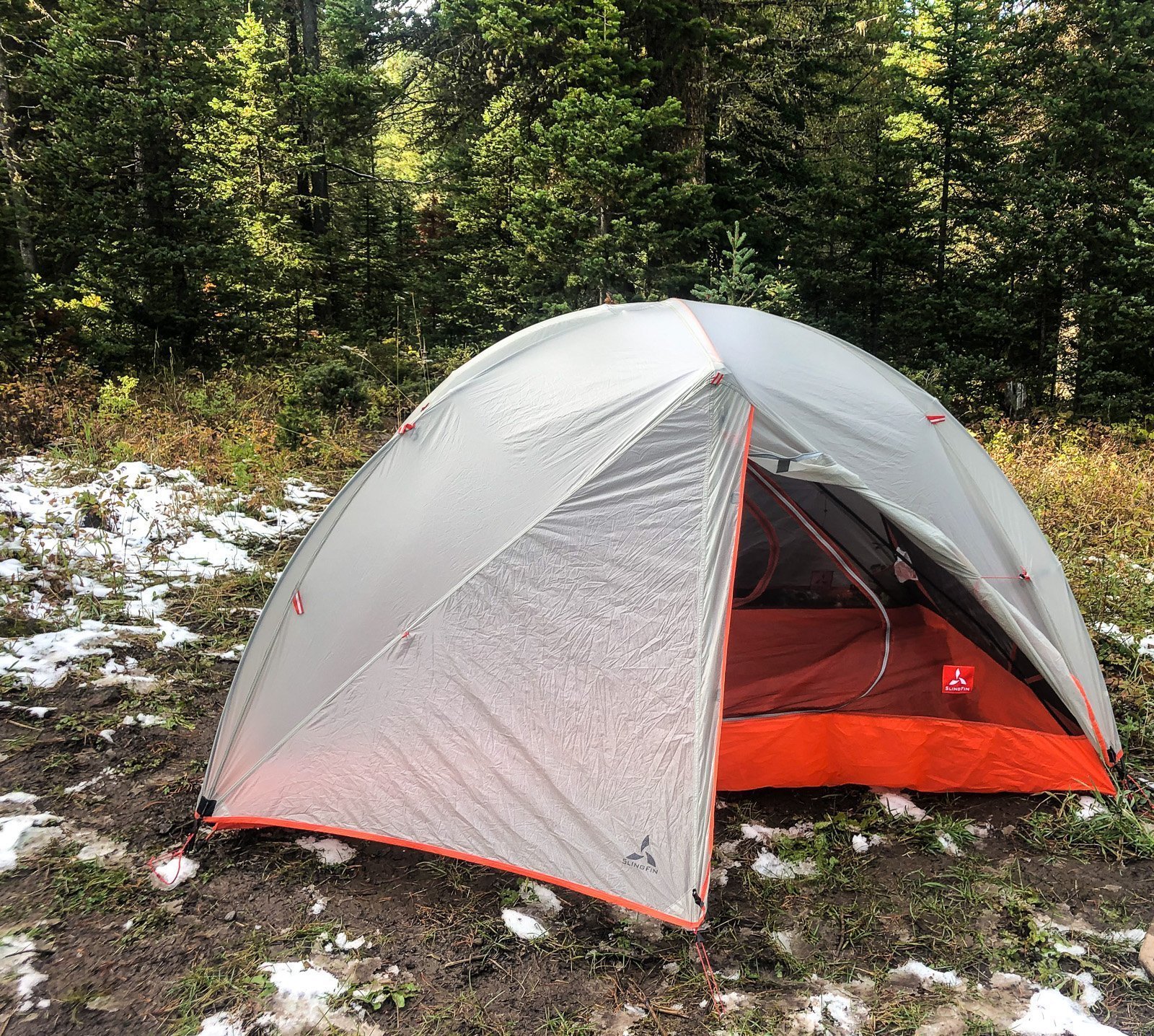

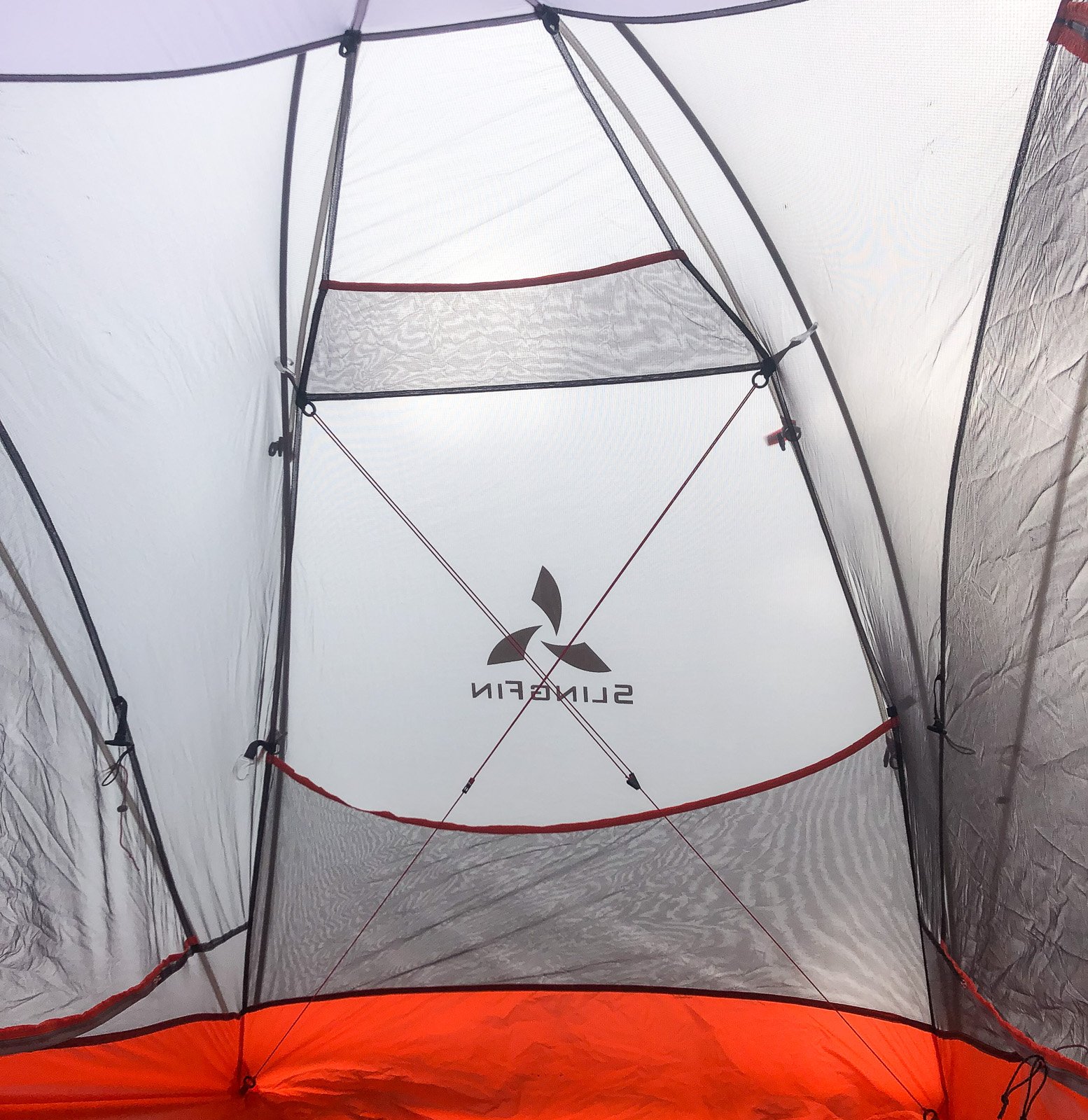
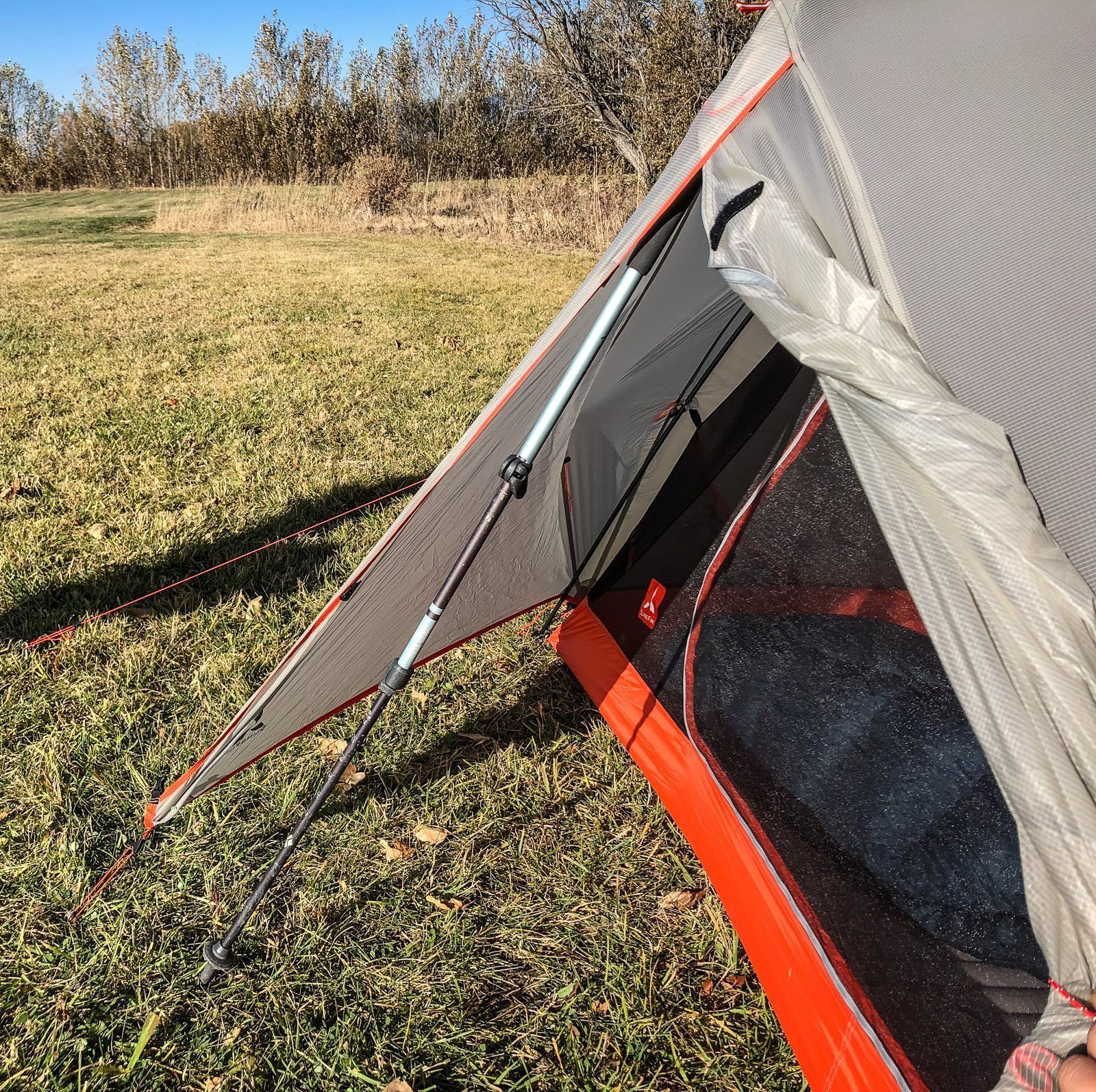
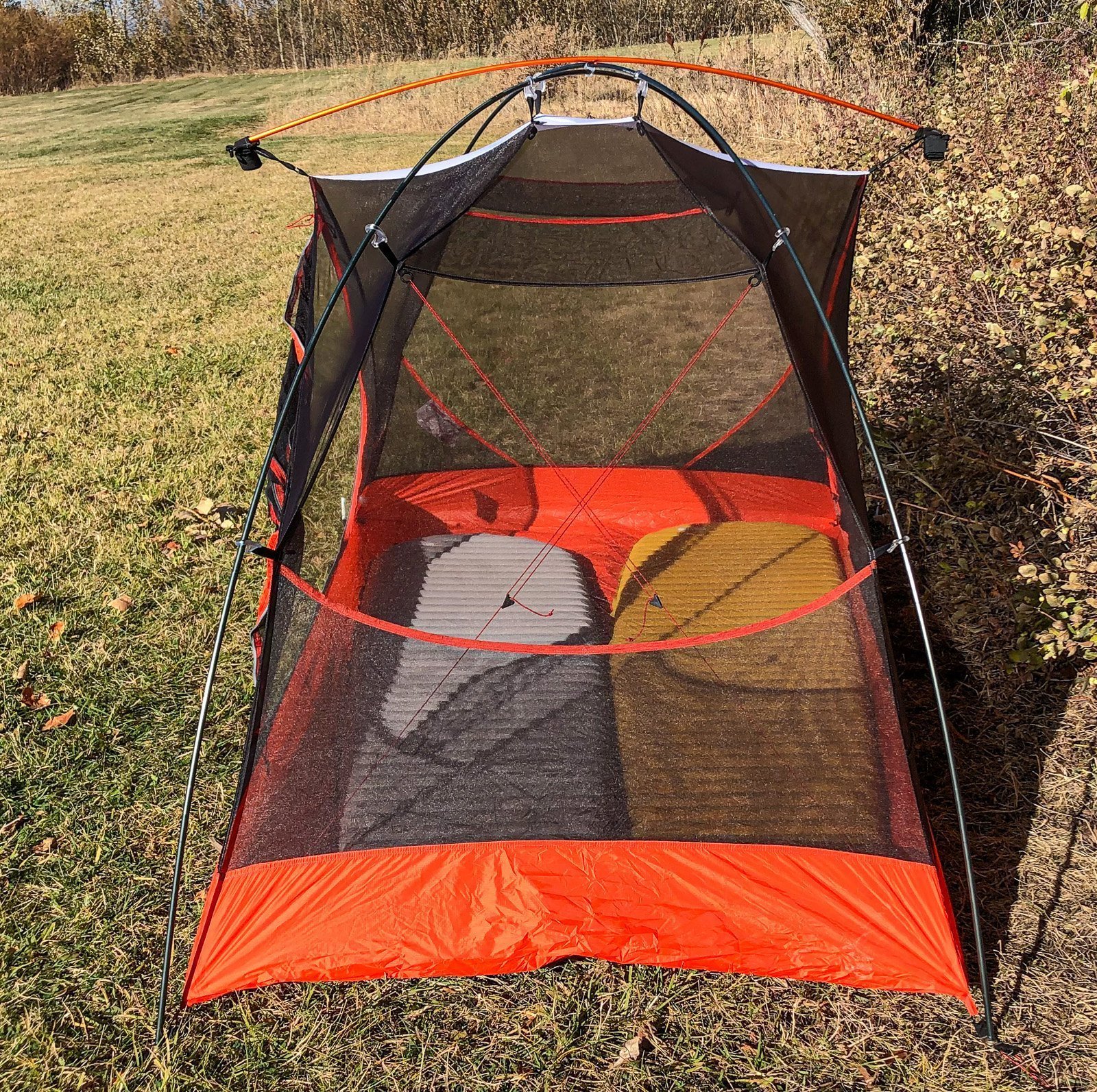
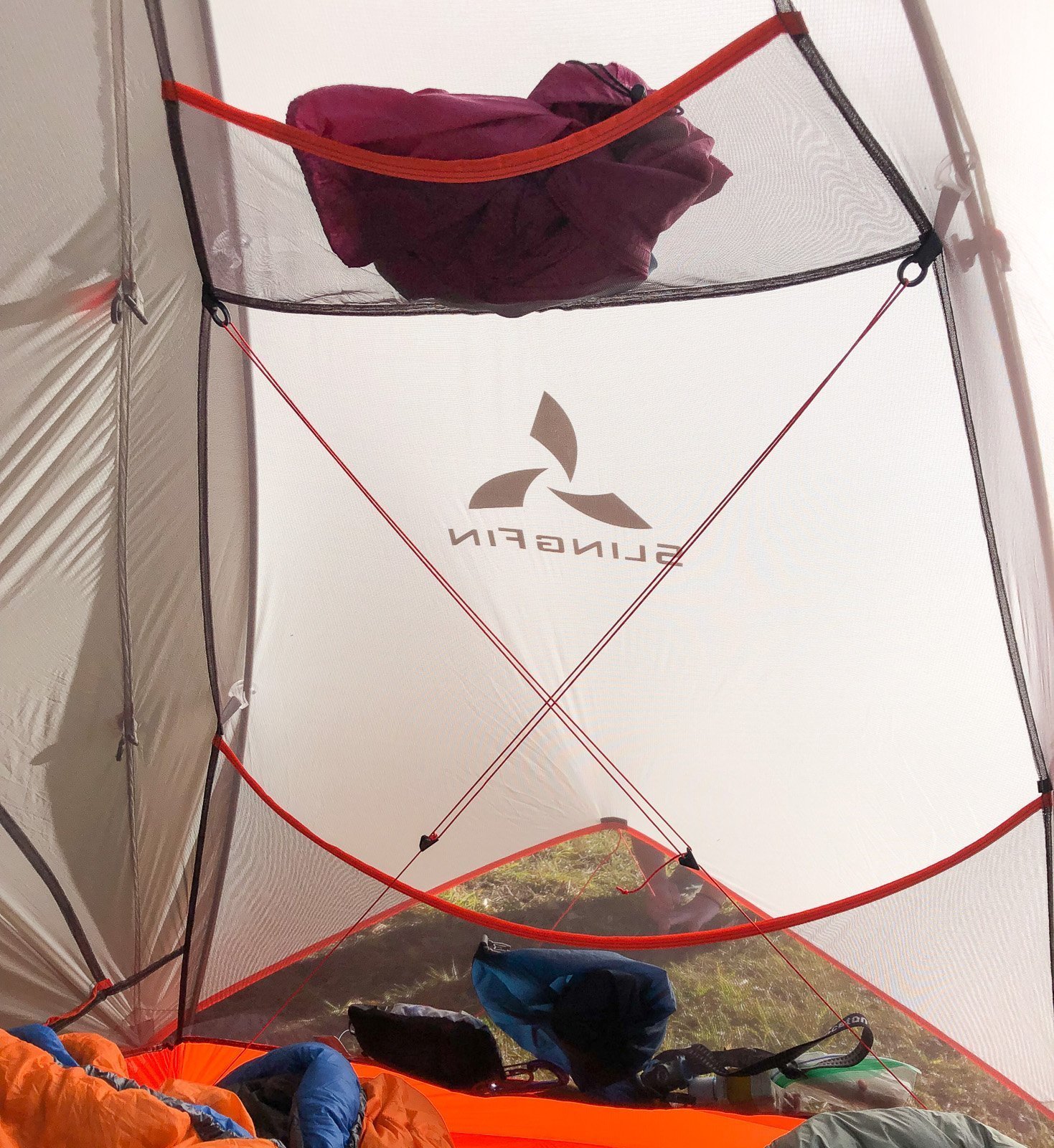
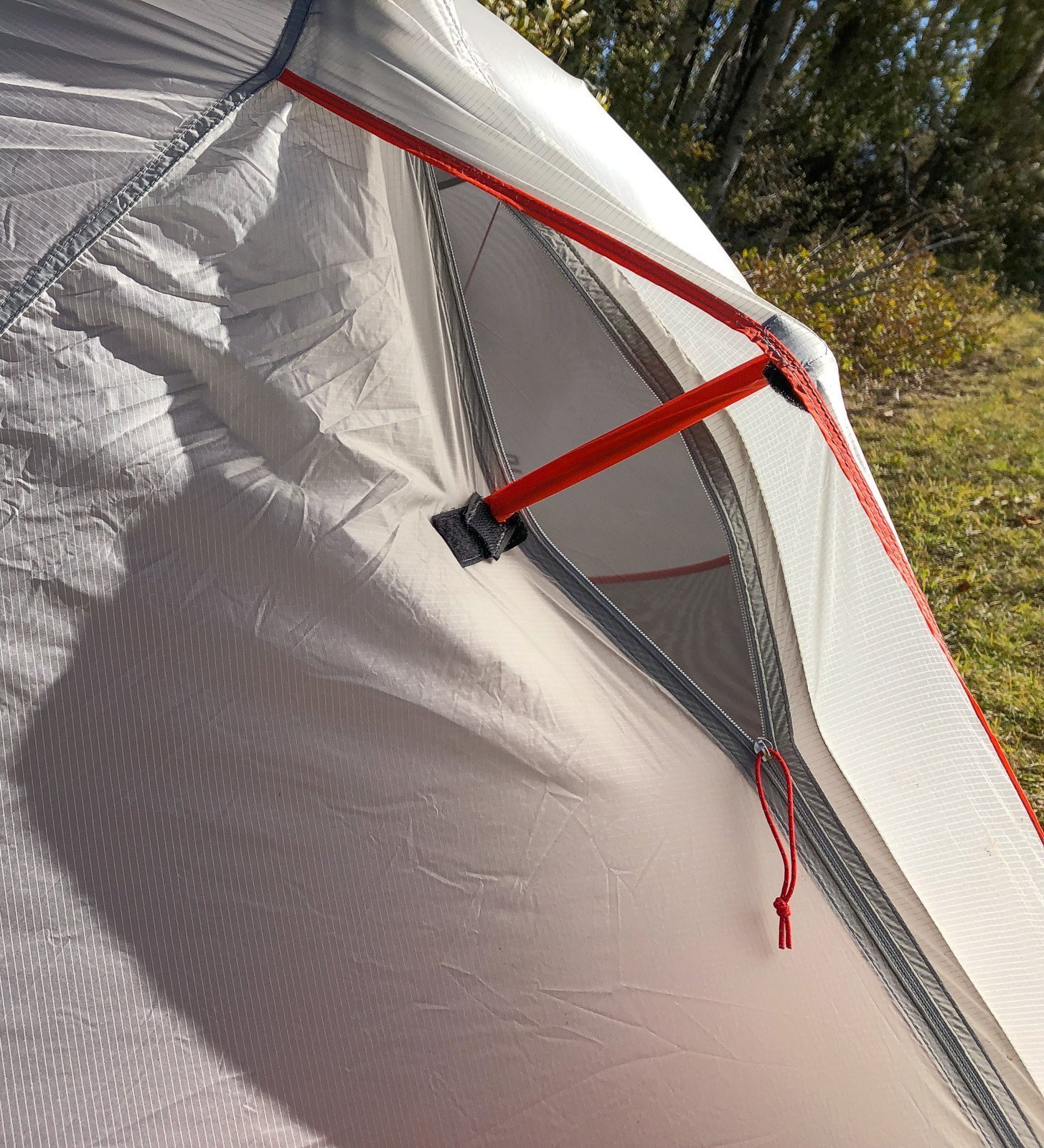
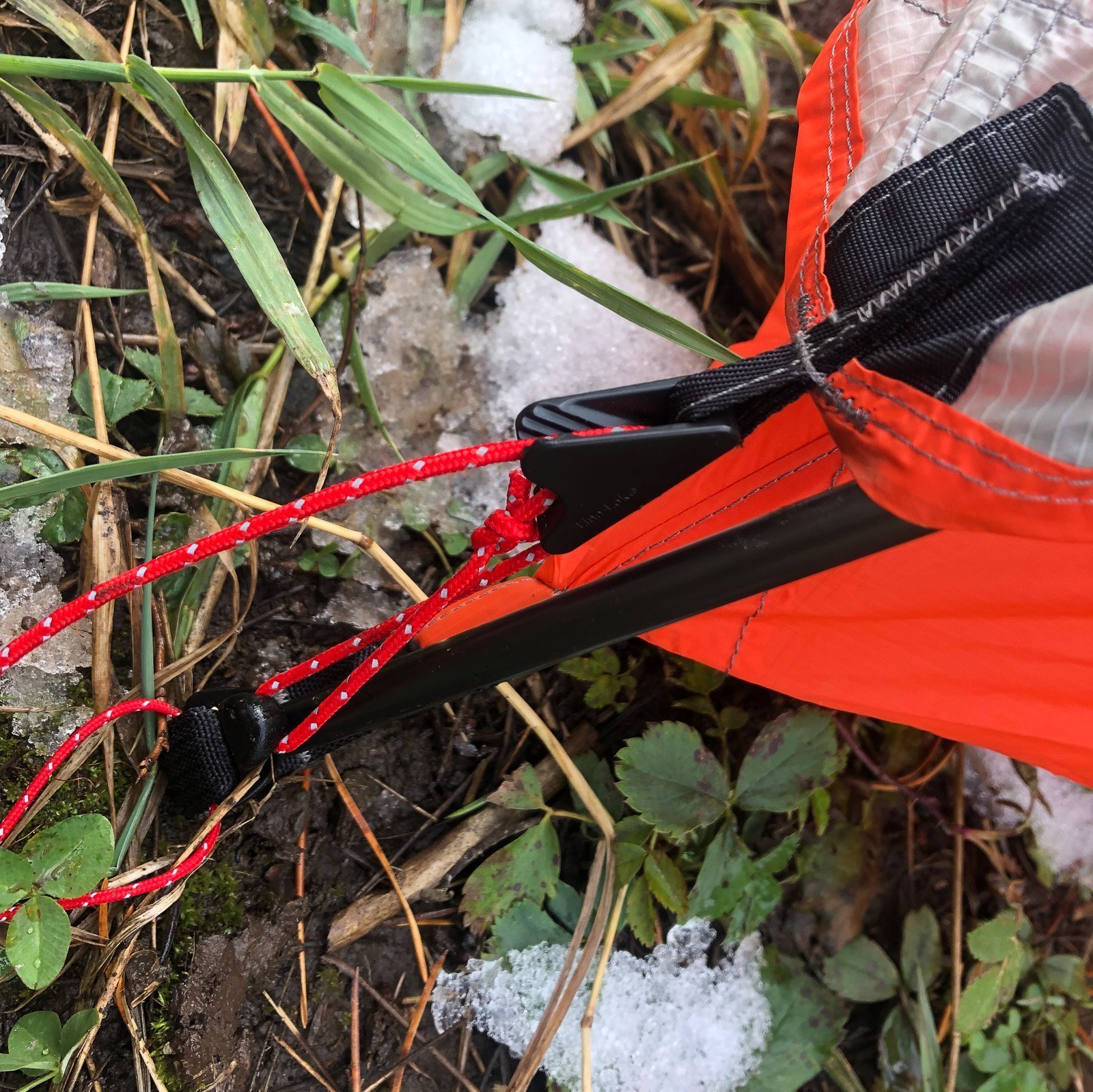


Share this entry